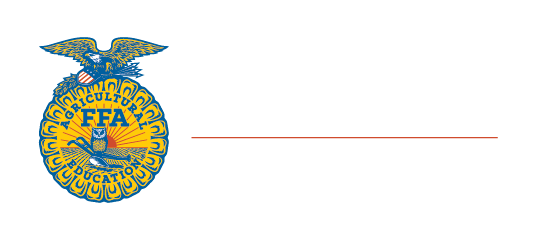Spanish Farmers
State Officer Team
Over the first two weeks this year, we had the amazing opportunity to participate in an international leadership seminar in Spain and Portugal with a group of 75 selected State Officers from across the nation. While we did enjoy touring the various cities and experiencing different culture, one of the highlights of the trip was meeting and talking with Spanish and Portuguese farmers about their agricultural practices. Each farmer in both countries had amazing stories to tell, but for Farmer Friday today, we are going to highlight three of the agriculturalists we met in Spain.
Luis
The very first ag facility we visited was a Charolais and Limousin cattle feedlot called Ganados Ruigan. The owner of the 6,000 head operation is Luis, a cattleman very sensitive to the well-being of his livestock. He explained several times during the tour that their cattle are treated in the best way possible and are grown as naturally as possible – meaning no growth hormones or antibiotics are used and the cattle are not castrated to keep them ‘stress-free.’ Luis was very eager to answer our questions despite the language barrier, and he walked us through step-by-step the stages cattle go through while in his feedlot. They are fed out with corn, soy, and barley, and are typically finished at around 700 kg, or 1500 pounds. Luis puts in many hours every day to ensure that his feedlot is running smoothly, and the animal care practices are satisfactory. He showed us what it means to be a hard-working agriculturalist.
Lola
We quickly learned that Lola, the owner of the greenhouse company we visited, was one of the most energetic and passionate people we’ve met. She immediately welcomed us in and started talking to us like we’d known each other for years. Lola helped everyone be engaged in her tour by the excitement she carried with her. That was probably the first time we saw people actually cheering about tomatoes. She was very excited to share with us that the reason they use plastic for their greenhouses was because it allows the wind to come in and take away the humidity, which prevents disease. No pesticides are used within the greenhouses (something she was very proud of), but instead numerous biocontrol methods. These methods included various helpful insects and plants, in addition to pheromones to drive pests away and keep her tomato and pepper plants healthy. Lola showed us what it means to be truly passionate when it comes to the work agriculturalists do.
ASAJA
Herman had the opportunity to speak to ASAJA members about generational renewal within American farms.
ASAJA (Association Argaria de Jovenes Agricultores – Young Spanish Farmers Association) represents over 300,000 farmers across Spain, and collectively they are a very aware group of the various challenges Spanish agriculturalists go through. We got to meet with members of ASAJA and discuss various issues related to farming practices that both Americans and Spaniards face. We were surprised to learn that many of the same issues we have at home such as implementing new technologies, water conservation, financial stress, and generational renewal; are present in Spain as well. ASAJA meets to help their fellow agriculturalists and be supportive when times get tough. They also advocate for the needs of Spanish farmers. From ASAJA, we learned it is important to be engaged as agriculturalists if we want to be successful in the future.
There were so many other places we visited that had people so willing to teach us about their farming practices. However, these three: Luis, Lola, and the ASAJA group, showed us that agriculturists in Spain are hard-working, passionate, and engaged – all qualities that are essential to the success of farming. Not all agriculturalists look the same, speak the same language, or use the same practices, but they all have one goal; to feed the world.



